Esther Sans Takeuchi, a materials scientist and chemical engineer at the U.S. Department of Energy’s (DOE) Brookhaven National Laboratory, was honored by the Journal of Physical Chemistry C in a special Festschrift issue earlier this year.
Tag: National Synchrotron Light Source II
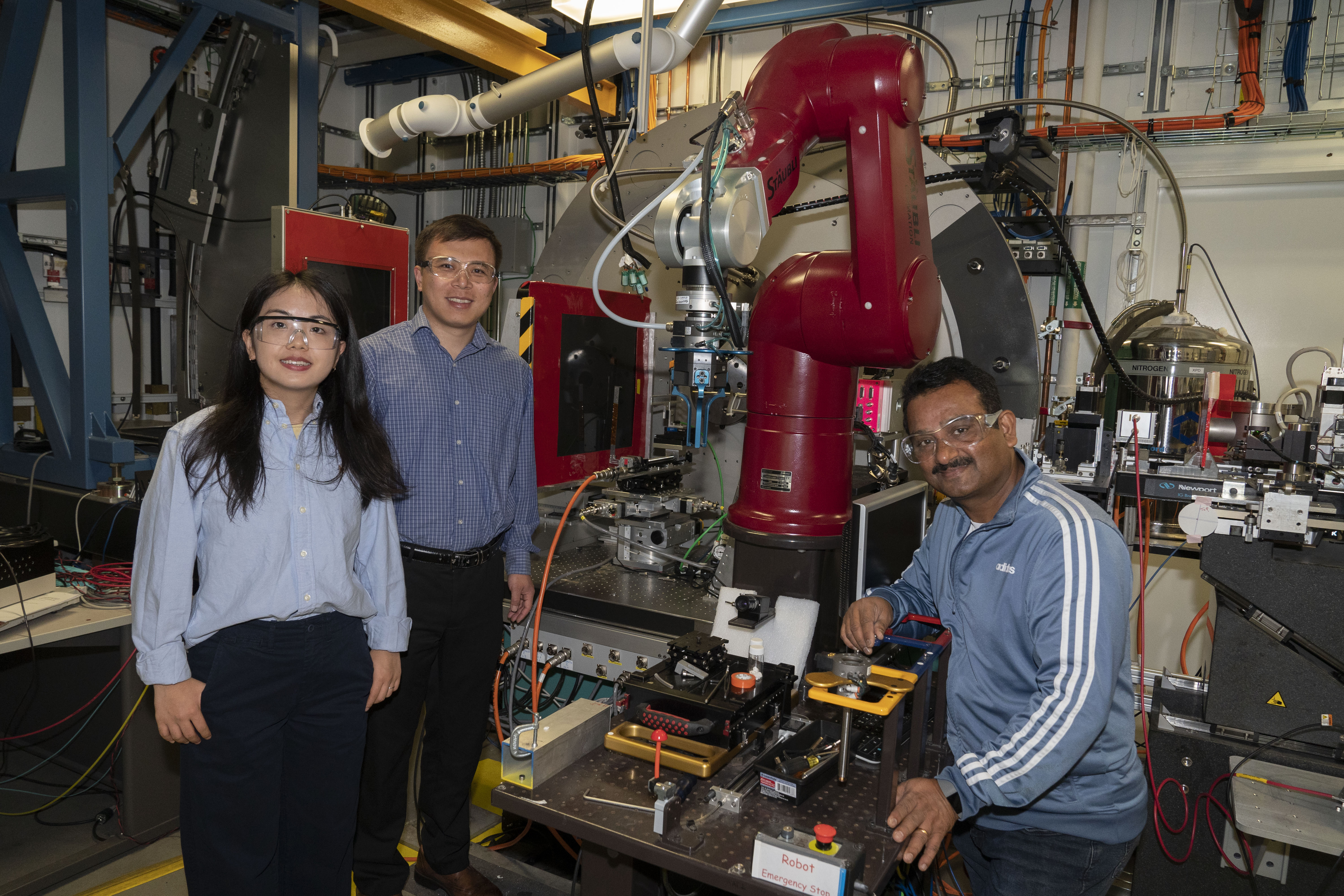
X-rays Reveal Elusive Chemistry for Better EV Batteries
A team of scientists led by chemists at the U.S. Department of Energy’s Brookhaven National Laboratory and Pacific Northwest National Laboratory has unraveled the complex chemical mechanisms of a battery component that is crucial for boosting energy density: the interphase.
Zhongwei Dai: Exploring the Strange Quantum World of 2D Materials
Zhongwei Dai, a researcher in the Interface Science and Catalysis Group of the Center for Functional Nanomaterials, probes the properties of atomically thin materials to identify promising candidates for quantum information science applications
Toward Scaling Up Nanocages to Trap Noble Gases
Commercially available materials may be a potentially scalable platform for trapping gases for nuclear energy and other applications.
Layered Graphene with a Twist Displays Unique Quantum Confinement in 2-D
Bilayer graphene with one of the two layers twisted displayed unique resonant electronic behavior. Understanding how electrons move in such 2-D materials could shed light on how to manipulate them for quantum computing and communication.
Tracking Pileups on Battery Charging Route to Drive Performance
An understanding of this mechanism could help scientists increase the total amount of energy stored by next-generation lithium-ion batteries.
Gaming the Research: Reinforcement Learning Changing Data Evaluation Challenges
Advances in artificial intelligence, specifically reinforcement learning, are proving beneficial to accelerating the pace of data-intensive challenges. The methods used by researchers with RL are techniques often used in video games, and by applying gamification to scientific processes, RL agents can learn as they are used in experiments, in effect, leveling up their rates of discovery as they work. Researchers are using trained RL agents at NSLS-II to accelerate the analysis of data-heavy measurements.
Automatically Steering Experiments Toward Scientific Discovery
Scientists at Brookhaven and Lawrence Berkeley National Laboratories have been developing an automated experimental setup of data collection, analysis, and decision making.
Exploring the Electrochemistry of Water-Based Batteries
Researchers at Stony Brook University (SBU) and the U.S. Department of Energy’s (DOE) Brookhaven National Laboratory have identified the primary reaction mechanism that occurs in a rechargeable, water-based battery made from zinc and manganese oxide. The findings, published in Energy and Environmental Science, provide new insight for developing grid-scale energy storage.
Uncovering Hidden Local States in a Quantum Material
States of local broken symmetry at high temperature—observed in several materials, including one with a metal-insulator transition, an iron-based superconductor, and an insulating mineral part of the Earth’s upper mantle—may enable the technologically relevant properties arising at much-lower temperature.
Putting Functional Proteins in Their Place
Using DNA, scientists organized bioactive proteins in desired 2-D and 3-D ordered arrays—promising for structural biology, biomedicine, and more.
Scientists Discover New Approach to Stabilize Cathode Materials
UPTON, NY—A team of researchers led by chemists at the U.S. Department of Energy’s (DOE) Brookhaven National Laboratory has studied an elusive property in cathode materials, called a valence gradient, to understand its effect on battery performance. The findings, published in Nature Communications, demonstrated that the valence gradient can serve as a new approach for stabilizing the structure of high-nickel-content cathodes against degradation and safety issues.
Mapping Performance Variations to See How Lithium-Metal Batteries Fail
Scientists have identified the primary cause of failure in a state-of-the-art lithium-metal battery, of interest for long-range electric vehicles: electrolyte depletion.
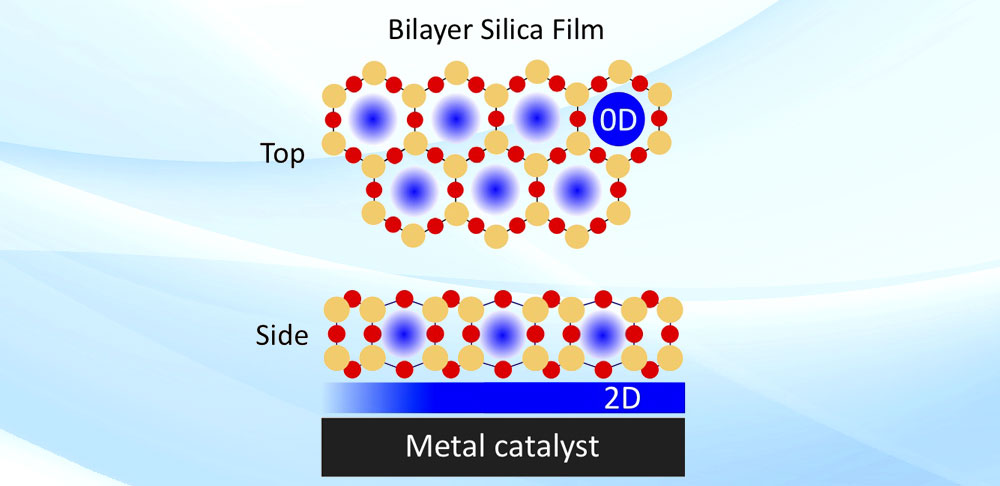
Chemistry Goes Under Cover
Scientists have discovered that physically confined spaces can make for more efficient chemical reactions.
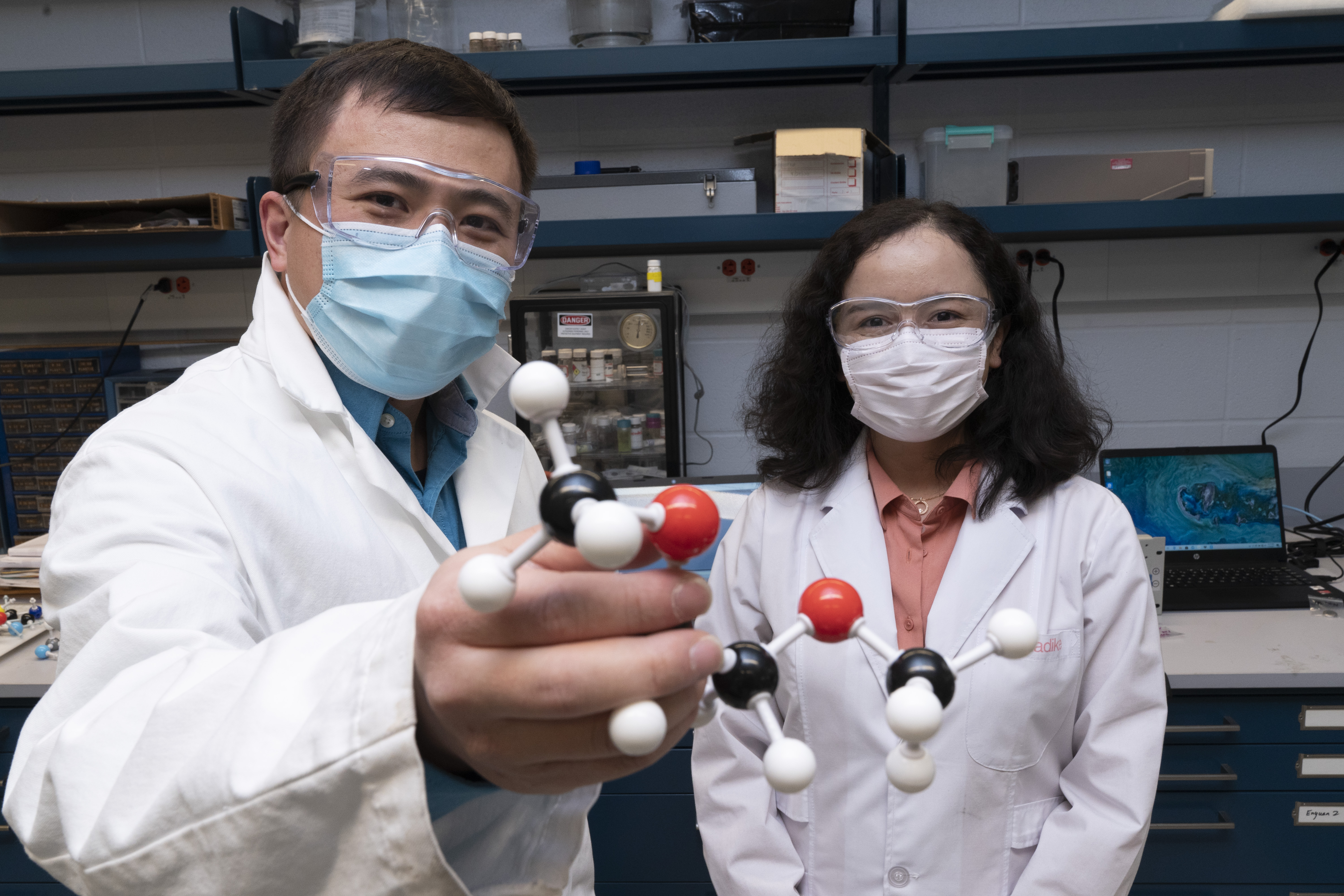
Chemists Settle Battery Debate, Propel Research Forward
UPTON, NY—A team of researchers led by chemists at the U.S. Department of Energy’s (DOE) Brookhaven National Laboratory has identified new details of the reaction mechanism that takes place in batteries with lithium metal anodes. The findings, published today in Nature Nanotechnology, are a major step towards developing smaller, lighter, and less expensive batteries for electric vehicles.
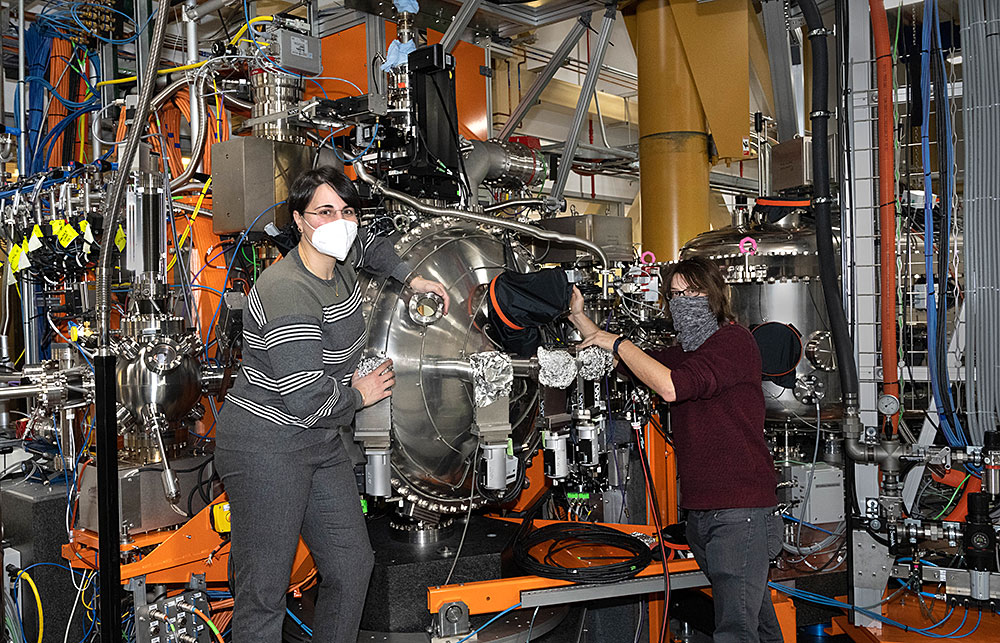
Scientists Streamline Process for Controlling Spin Dynamics
UPTON, NY—Marking a major achievement in the field of spintronics, researchers at the U.S. Department of Energy’s (DOE) Brookhaven National Laboratory and Yale University have demonstrated the ability to control spin dynamics in magnetic materials by altering their thickness. The study, published today in Nature Materials, could lead to smaller, more energy-efficient electronic devices.
Exploring Blended Materials Along Compositional Gradients
A new platform could accelerate the development of blended materials with desired properties.
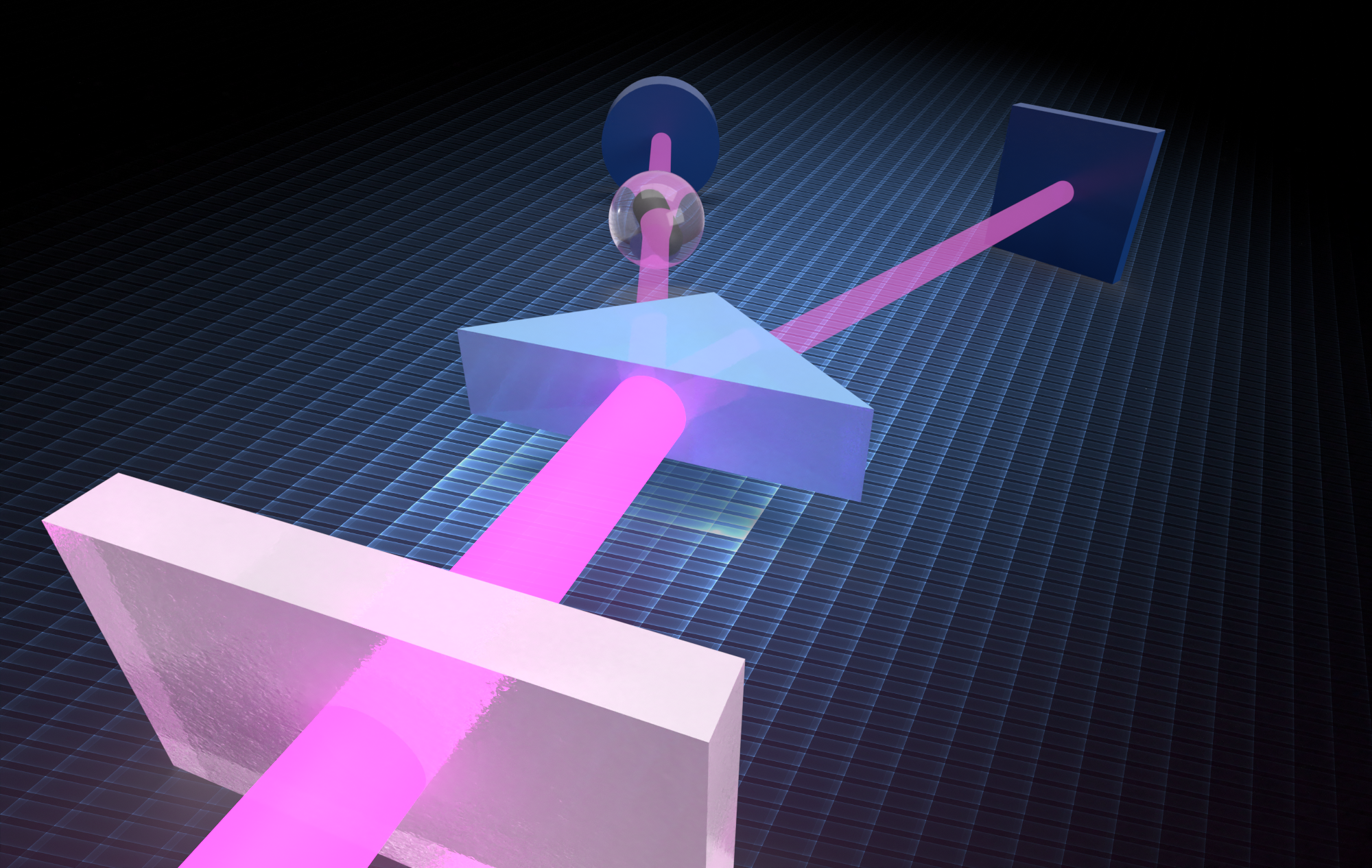
Quantum X-ray Microscope Underway at Brookhaven Lab
UPTON, NY—Scientists at the U.S. Department of Energy’s (DOE) Brookhaven National Laboratory have begun building a quantum-enhanced x-ray microscope at the National Synchrotron Light Source II (NSLS-II). This groundbreaking microscope, supported by the Biological and Environmental Research progam at DOE’s Office of Science, will enable researchers to image biomolecules like never before.
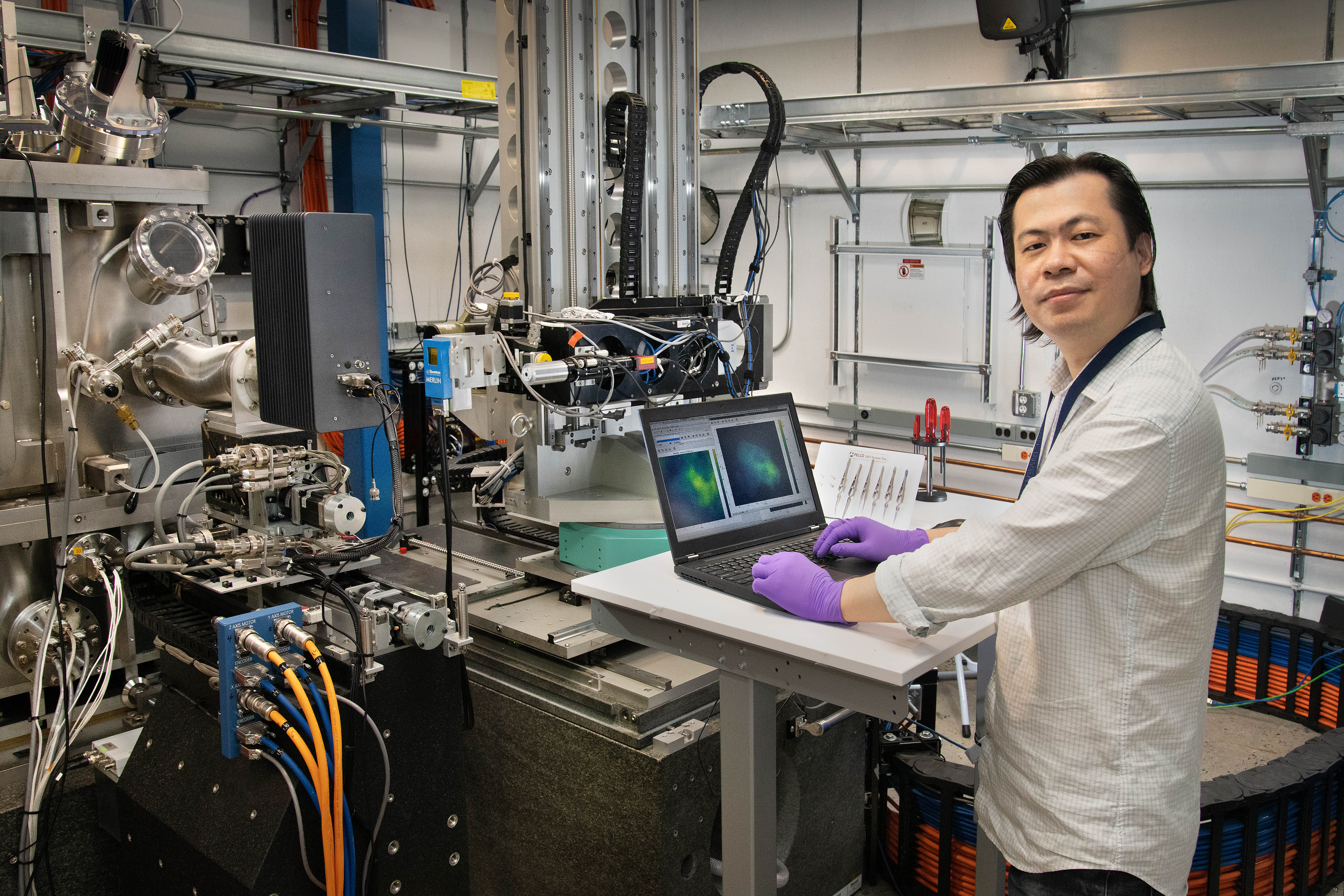
IBM Investigates Microelectronics at NSLS-II
From smartphones to laptops, the demand for smaller and faster electronics is ever increasing. And as more everyday activities move to virtual formats, making consumer electronics more powerful and widely available is more important than ever. IBM is one company at the forefront of this movement, researching ways to shrink and redesign their microelectronics—the transistors and other semiconductor devices that make up the small but mighty chips at the heart of all consumer electronics.

NSLS-II User Profile: Joshua Carter, CEO of Helix BioStructures
Joshua Carter is a co-founder and the CEO of Helix BioStructures, a contract research organization serving the pharmaceutical industry in early-phase drug discovery. Since starting Helix Biostructures in 2017, Carter has leveraged the fast-paced, industrial capabilities of the National Synchrotron Light Source II (NSLS-II)—a U.
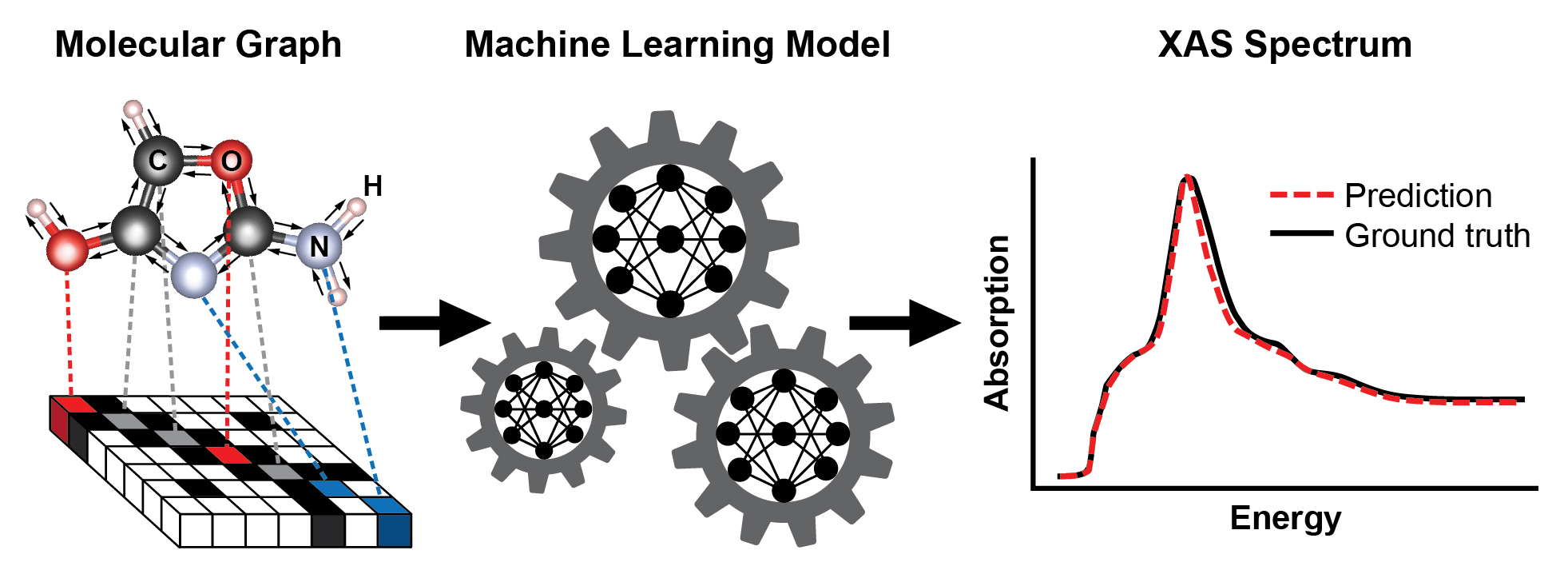
Predicting X-ray Absorption Spectra from Graphs
Scientists built a machine learning model that can rapidly predict how atoms absorb x-rays for materials science research.
Brookhaven and Forge Nano to Mature Noble Gas-Trapping Technology
Through DOE’s Technology Commercialization Fund, the national lab-startup team will develop “nanocages” for nuclear applications.

At the Interface of Organic Chemistry and Nanotechnology with Adam Braunschweig
Adam Braunschweig—a CUNY ASRC associate professor—is a user at Brookhaven Lab’s Center for Functional Nanomaterials (CFN) studying how molecules in organic semiconductor thin films pack together.
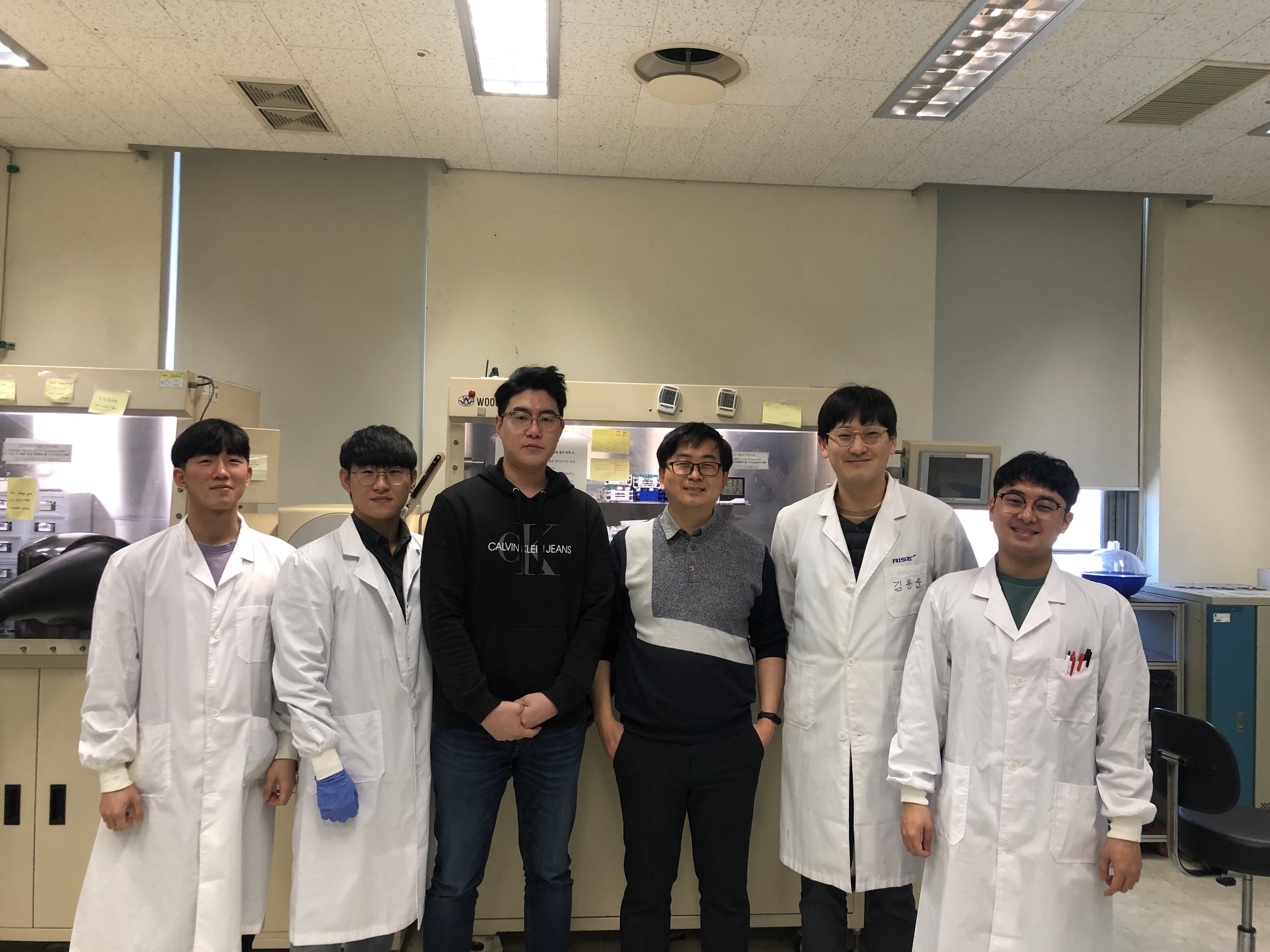
Stabilizing High-Efficiency Solar Cells
A new processing method helps the devices maintain their initial efficiency over time under continuous exposure to light or heat.
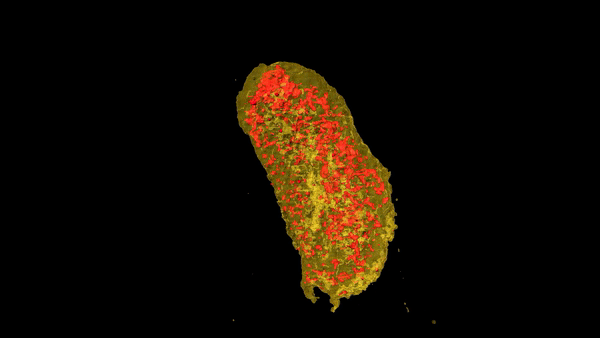
Cell Membrane Proteins Imaged in 3-D
A team of scientists including researchers at the National Synchrotron Light Source II have demonstrated a new technique for imaging proteins in 3-D with nanoscale resolution. Their work, published in the Journal of the American Chemical Society, enables researchers to identify the precise location of proteins within individual cells, reaching the resolution of the cell membrane and the smallest subcellular organelles.
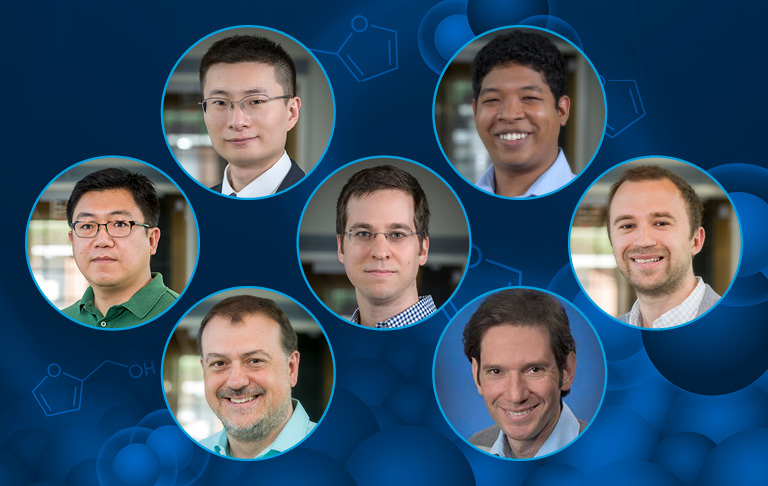
Upgrading Biomass with Selective Surface-Modified Catalysts
Loading single platinum atoms on titanium dioxide promotes the conversion of a plant derivative into a potential biofuel.
Meet Liguo Wang, Scientific Operations Director of LBMS
This spring, the U.S. Department of Energy’s (DOE) Brookhaven National Laboratory will open its new cryo-electron microscopy (cryo-EM) center, the Laboratory for BioMolecular Structure (LBMS). A state-of-the-art research center for life sciences imaging, LBMS will offer two advanced cryo-electron microscopes for studying complex proteins, as well as the architecture of cells and tissues.

Top-10 Science and Technology Achievements of 2019
In 2019, scientists at the U.S. Department of Energy’s (DOE) Brookhaven National Laboratory dove deeper into proton spin, took a leap in quantum communication, and uncovered new details of plant biochemistry, battery cathodes, catalysts, superconductors, and more. Here, in no particular order, are the biggest advances of the year.
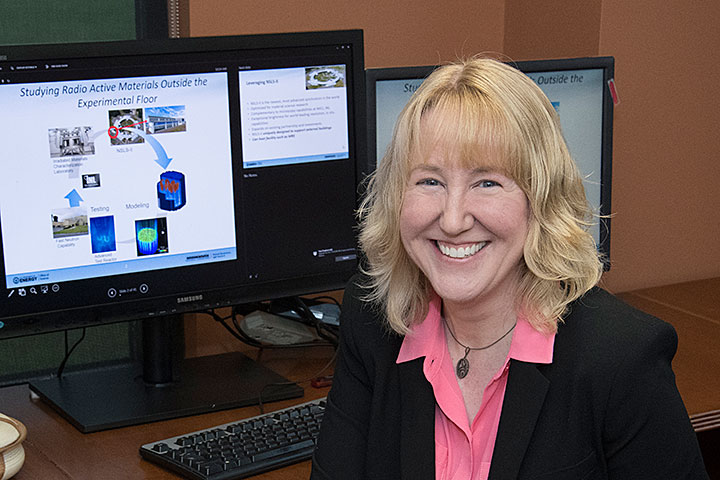
Lynne Ecker: A Nuclear Materials Scientist
Ecker became chair of Brookhaven’s Nuclear Science and Technology Department in October 2018, bringing expertise in nuclear reactor materials.